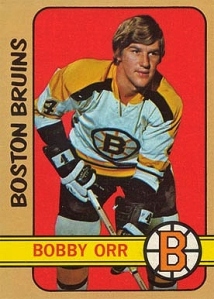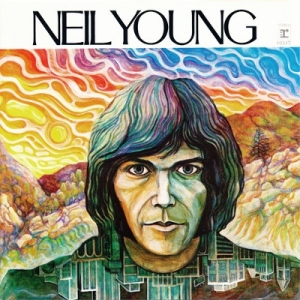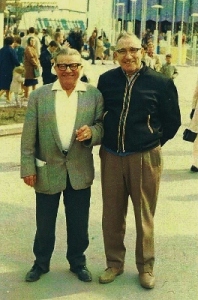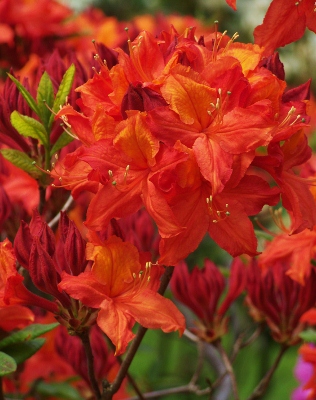April 2024 M T W T F S S 1 2 3 4 5 6 7 8 9 10 11 12 13 14 15 16 17 18 19 20 21 22 23 24 25 26 27 28 29 30 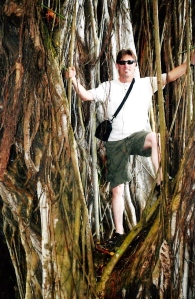
-
Recent Posts
Archives
Categories
- Art
- change
- Chinatown
- Christmas
- contentment
- curiosity
- dalai lama
- dedication
- Environment
- family
- fatherhood
- gardening
- generosity
- genocide
- getting old
- Growing Your Own Food
- history
- hockey
- humanity
- Imagination
- inspiration from the garden
- leaving home
- Life
- men
- petroglyphs and pictographs
- photography
- preserving the planet
- respect
- save the ocean
- snobbery
- spiritual
- suicide
- the meaning of life
- ugly architecture
- Uncategorized
- Vancouver
- where it all started
- whitewater rafting
- wildflowers
- yin and yang
-
Join 22 other subscribers
The Christmas Trees of 1914
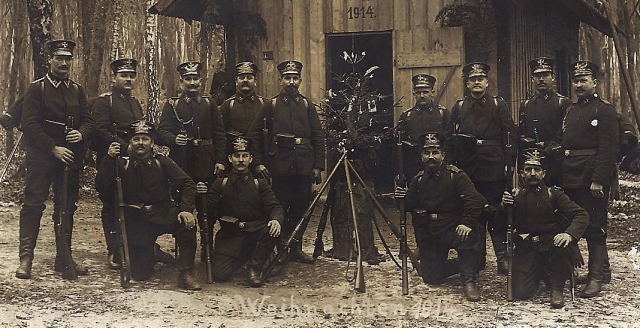 With the centenary of the First World War, we have been reminded of its many harrowing battles, such as Ypres, Gallipoli, Passchendaele, and yet the most impressive incident of this bloody conflict, the Christmas truce of 1914, nearly brought all of these hostilities to an end. The catalyst for this impromptu detente was little more than than a few small decorated trees sitting on the parapets of the front trenches of the German lines. It began Christmas Eve all along the western front from Belgium to France (with a few incidents in the east involving Russians) and by most accounts, it was the Germans or to be more precise, Bavarians and Saxons, who made the first overtures for a temporary truce in order to celebrate Weihnachten.
With the centenary of the First World War, we have been reminded of its many harrowing battles, such as Ypres, Gallipoli, Passchendaele, and yet the most impressive incident of this bloody conflict, the Christmas truce of 1914, nearly brought all of these hostilities to an end. The catalyst for this impromptu detente was little more than than a few small decorated trees sitting on the parapets of the front trenches of the German lines. It began Christmas Eve all along the western front from Belgium to France (with a few incidents in the east involving Russians) and by most accounts, it was the Germans or to be more precise, Bavarians and Saxons, who made the first overtures for a temporary truce in order to celebrate Weihnachten. 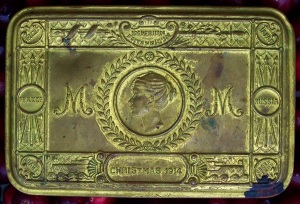 As the candles were lit on these tiny Christmas trees and carols sung from the trenches, it must have crossed the minds of many soldiers that maybe the guys on the other side of the barbed wire weren’t murderous Huns or treacherous Tommies, but just people missing their family and homes, much like themselves. Truth be told, with the exception of the officers, most of these so-called soldiers were little more than ordinary men – people who had been previously employed as bakers, labourers, farmers or waiters. While soldiers on both sides were enjoying packages from home and even official gifts – such as the brass Princess Mary Tin
As the candles were lit on these tiny Christmas trees and carols sung from the trenches, it must have crossed the minds of many soldiers that maybe the guys on the other side of the barbed wire weren’t murderous Huns or treacherous Tommies, but just people missing their family and homes, much like themselves. Truth be told, with the exception of the officers, most of these so-called soldiers were little more than ordinary men – people who had been previously employed as bakers, labourers, farmers or waiters. While soldiers on both sides were enjoying packages from home and even official gifts – such as the brass Princess Mary Tin  (filled with cigarettes and a small greeting card) for the allied soldiers and a ceramic Prince Wilhelm pipe for the Germans – the celebrations were understandably muted given the fact that just a few yards from the trenches were the frozen bodies of fallen comrades, left in the tangled mess of mud and shell holes called ‘no man’s land’. After singing carols to each other the night before, a few brave soldiers raised their hands on Christmas Day and walked towards the enemy lines, risking certain death for only the chance of a temporary truce. A few of them found it, and when they did they chose to bury their dead together, share what little Christmas fare they had, exchange trinkets such as brass buttons and listen to each other’s stories of home. So this Christmas, when you are sitting in your warm, comfortable home, basking in the glow of a decorated tree, remember that
(filled with cigarettes and a small greeting card) for the allied soldiers and a ceramic Prince Wilhelm pipe for the Germans – the celebrations were understandably muted given the fact that just a few yards from the trenches were the frozen bodies of fallen comrades, left in the tangled mess of mud and shell holes called ‘no man’s land’. After singing carols to each other the night before, a few brave soldiers raised their hands on Christmas Day and walked towards the enemy lines, risking certain death for only the chance of a temporary truce. A few of them found it, and when they did they chose to bury their dead together, share what little Christmas fare they had, exchange trinkets such as brass buttons and listen to each other’s stories of home. So this Christmas, when you are sitting in your warm, comfortable home, basking in the glow of a decorated tree, remember that 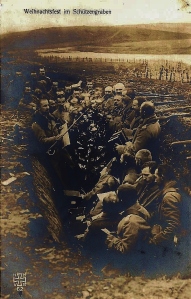 there are still hundreds of thousands of refugees caught in conflicts as far flung as Syria, Ukraine, Iraq, Somalia and Afghanistan – people who are homeless and desperate for peace. Let’s hope that some of that same spirit that was inspired a century ago by a handful of Christmas trees in those muddy frontline trenches will again bring forth some brave soldiers willing to summon the courage to lay down their arms and risk the hope of peace. One hundred years ago, sworn enemies put down their guns, looked each other in the eye and chose to shake hands. Maybe it’s time we tried it again. Maybe this time we won’t go back to war and ‘peace on earth, goodwill to men’ will become than a seasonal slogan, but a way of life.
there are still hundreds of thousands of refugees caught in conflicts as far flung as Syria, Ukraine, Iraq, Somalia and Afghanistan – people who are homeless and desperate for peace. Let’s hope that some of that same spirit that was inspired a century ago by a handful of Christmas trees in those muddy frontline trenches will again bring forth some brave soldiers willing to summon the courage to lay down their arms and risk the hope of peace. One hundred years ago, sworn enemies put down their guns, looked each other in the eye and chose to shake hands. Maybe it’s time we tried it again. Maybe this time we won’t go back to war and ‘peace on earth, goodwill to men’ will become than a seasonal slogan, but a way of life.
Drink the milk, but don’t kill the cow
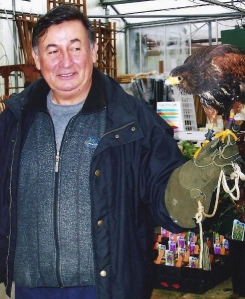 “Tomate la leche, pero no mates la vaca.” Josephina Ramos “We make a living by what we get. We make a life by what we give.” Winston Churchill (1874-1965)
“Tomate la leche, pero no mates la vaca.” Josephina Ramos “We make a living by what we get. We make a life by what we give.” Winston Churchill (1874-1965)
It takes a special kind of crazy person to be a fulltime gardener, someone who understands that basking in the summer sunshine or crisp autumn air is always tempered by those arthritic days of winter – when the everpresent aches in your knees and knuckles become a sort of seasonal penance. Accordingly, I have been ‘special’ for over thirty years now, but the winter work never really bothered me when I was a younger estate gardener or landscaper. That said, the older nursery manager incarnation of me sometimes struggles with the dark days of January and February, when garden centres everywhere become the loneliest places on the planet. With nothing but an icy north wind, an occasional Steller’s Jay and CBC radio (even Rex Murphy starts sounding like an old friend) to keep you company, it can be difficult to endure eight hours of outdoor solitary confinement.
Enter Carlos, a local gardener with a penchant for  showing-up with a steaming cup of coffee when I least expect it (but appreciate it the most). Quite often he’d make an appearance late in the day, still wet and cold from his own work, just to shake my hand, say hi and drop off a tall Starbucks. Over the years I was the recipient of many cups of coffee and while I did my best to return the favour from time to time, what always made them taste that much better was the simple generosity of the man who brought them – so one day I just asked Carlos why he was such a thoughtful person. He told me that he learned the gift of giving from his mother Josephina, who always told him when he was a boy growing up in Mexico to “drink the milk, but don’t kill the cow” (in Spanish, of course).
showing-up with a steaming cup of coffee when I least expect it (but appreciate it the most). Quite often he’d make an appearance late in the day, still wet and cold from his own work, just to shake my hand, say hi and drop off a tall Starbucks. Over the years I was the recipient of many cups of coffee and while I did my best to return the favour from time to time, what always made them taste that much better was the simple generosity of the man who brought them – so one day I just asked Carlos why he was such a thoughtful person. He told me that he learned the gift of giving from his mother Josephina, who always told him when he was a boy growing up in Mexico to “drink the milk, but don’t kill the cow” (in Spanish, of course).
The sarcastic genius of this Mexican proverb lays in its not-too-subtle approach of stating the obvious – if we do nothing but take, eventually the giving will come to an end. It almost sounds like a tailor-made slogan for my generation, the baby boomers, who just may end up being the only pack of peers to successfully ‘milk the cow to death’ by depleting the resources of an entire planet to ensure that they get everything they want, when they want it and for as long as they think they need it. Given the precarious state of the biosphere that they will inevitably leave behind, it might be best to let the meek inherit the earth – but we should at least leave the rest of the universe to those who really deserve it, people like Carlos…the generous.
like a tailor-made slogan for my generation, the baby boomers, who just may end up being the only pack of peers to successfully ‘milk the cow to death’ by depleting the resources of an entire planet to ensure that they get everything they want, when they want it and for as long as they think they need it. Given the precarious state of the biosphere that they will inevitably leave behind, it might be best to let the meek inherit the earth – but we should at least leave the rest of the universe to those who really deserve it, people like Carlos…the generous.
My Brother Has a Pair of Those
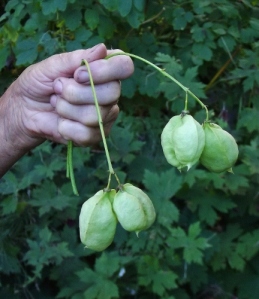 The Garden That Grows Memories
The Garden That Grows Memories
“Pleasure is the flower that passes; remembrance, the lasting perfume.” Jean de Boufflers (1738-1815)
I was touring a friend’s garden the other day and in the process, learned what we really grow when we care about what we do. She is a grandmother and getting a bit older, and I can tell by her body language that the one thing that concerns her the most is the state of the five acres that surrounds her rural home. It is full of rare trees, species rhododendrons and seedlings – literally hundreds and hundreds of them – all lovingly planted each time a void opened in what was a Christmas tree farm. She can hardly take two steps without pulling a weed or fussing over a little pruning, but even with these minor distractions she still has a sharp sense of humour. We were joined that day by her grown daughter and mine, a recent university graduate and as we approached a Bladdernut tree (Staphylea) she picked a pair of inflated seedpods and told us a little story. Many years ago she was giving much the same tour to a young family and as they approached this tree the eight-year-old daughter blurted rather matter-of-factly that “my brother has a pair of those”, resulting in one of those awkward silences that can only be remedied by laughter. As we walked along there were other stories and special places – the secret garden…the Cypress with three crooked stems, one for each of her daughters…the horse paddock…the Japanese Maple tunnel – each tainted by the laughter and dreams of her children and grandchildren. I could tell by the look in her grown daughter’s eyes that the memories of those childhood haunts were not diminished by time or weeds, or a few dead branches – they were as beautiful in her mind as the day she had first experienced them. And then it dawned on me that my friend really wasn’t growing rare plants and trees…she was making memories…and in her garden, they were all good ones.
Posted in gardening
Leave a comment
The United Nations of Gardening
“Everything that slows us down and forces patience, everything that sets us back into the slow circles of nature, is a help. Gardening is an instrument of grace.” May Sarton (1912-1995)
Surprisingly enough, this whole train of thought came about as a result of two young brothers fighting over hockey cards at the garden centre where I work. It put an instant smile on my face and brought me back to my childhood, when I would trade cards with my two brothers, although instead of Sidney Crosby or Alex Ovechkin being the prized players, it was more like Ken Dryden or Bobby Orr. The difference here was that they were speaking Arabic and the only words I understood were the team and player’s names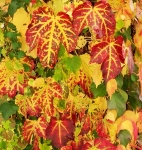 and yet they had seemed to have quickly adopted a time-honored Canadian tradition. They, along with their family, were recent immigrants from Iraq and their parents were looking for a few plants to remind them of home…grapes, jasmine, figs…all of which they were delighted to have found. While I would love to think of hockey as that international bond, the father upon noticing me admire his boys trading hockey cards said, ” Don’t ask me, they just love hockey, but I don’t know a thing about it”. And of course one could put my theory to the test by simply wearing a Boston Bruins jersey to a Vancouver Canucks game to know that hockey isn’t always
and yet they had seemed to have quickly adopted a time-honored Canadian tradition. They, along with their family, were recent immigrants from Iraq and their parents were looking for a few plants to remind them of home…grapes, jasmine, figs…all of which they were delighted to have found. While I would love to think of hockey as that international bond, the father upon noticing me admire his boys trading hockey cards said, ” Don’t ask me, they just love hockey, but I don’t know a thing about it”. And of course one could put my theory to the test by simply wearing a Boston Bruins jersey to a Vancouver Canucks game to know that hockey isn’t always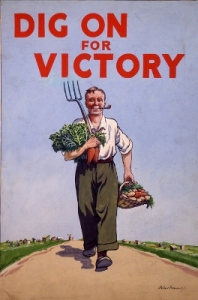 something that brings us together, unless of course you are all cheering for the same team, like during the ’72 Summit Series. About two weeks later I was visiting the local community garden in Pitt Meadows, interviewing a few people for an article I was writing. One of them was John Blackman, someone I had known for quite some time on a casual basis. I found out that he had been a Victory Gardener during the war, and had survived the blitz in London as a young boy while all along tending to his
something that brings us together, unless of course you are all cheering for the same team, like during the ’72 Summit Series. About two weeks later I was visiting the local community garden in Pitt Meadows, interviewing a few people for an article I was writing. One of them was John Blackman, someone I had known for quite some time on a casual basis. I found out that he had been a Victory Gardener during the war, and had survived the blitz in London as a young boy while all along tending to his 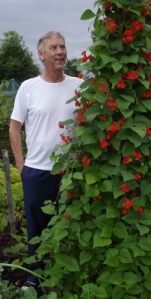 vegetables. He, along with many others, are constantly helping out new gardeners with some sage advice and yet they all remarked at how much they had learned from younger members, many of which are newly arrived immigrants who can’t afford a house but choose to grow their food here at the community garden. They bring new plants and gardening techniques, they also learn what grows successfully here and how to do it, and we seem to be richer for the experience. When I think about it, being a nursery manager puts
vegetables. He, along with many others, are constantly helping out new gardeners with some sage advice and yet they all remarked at how much they had learned from younger members, many of which are newly arrived immigrants who can’t afford a house but choose to grow their food here at the community garden. They bring new plants and gardening techniques, they also learn what grows successfully here and how to do it, and we seem to be richer for the experience. When I think about it, being a nursery manager puts 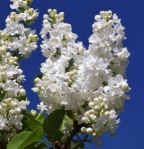 me in the crossroads of many cultures and on any given day, it is much like the United Nations of gardening. I have people from all over the world searching for the plants that remind them of home and I seem to learn something new from them with each encounter. These are for the most part perfect strangers and yet when they find the plant they are looking for or sense in me a kindred gardening spirit, they treat me like an old friend. Like the woman from Ukraine who upon finding a white lilac in bloom, simply smiled at me and said “Lilacs are home”, and I knew exactly what she meant.
me in the crossroads of many cultures and on any given day, it is much like the United Nations of gardening. I have people from all over the world searching for the plants that remind them of home and I seem to learn something new from them with each encounter. These are for the most part perfect strangers and yet when they find the plant they are looking for or sense in me a kindred gardening spirit, they treat me like an old friend. Like the woman from Ukraine who upon finding a white lilac in bloom, simply smiled at me and said “Lilacs are home”, and I knew exactly what she meant. 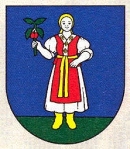 The couple from Slovakia who finally found a Cornus mas or Cornelian Cherry tree and told me that once it is planted in their yard, it will really feel like home. Or Asia (this is her anglicized name), a tiny lady formerly from Taipei who is always on the look-out for a new winter camellia or Chinese flowering plum (Prunus mume) to make her Burnaby garden feel a little more like Taiwan. So it appears that gardening is one thing, maybe even the only thing, that brings people from all over this world, together.
The couple from Slovakia who finally found a Cornus mas or Cornelian Cherry tree and told me that once it is planted in their yard, it will really feel like home. Or Asia (this is her anglicized name), a tiny lady formerly from Taipei who is always on the look-out for a new winter camellia or Chinese flowering plum (Prunus mume) to make her Burnaby garden feel a little more like Taiwan. So it appears that gardening is one thing, maybe even the only thing, that brings people from all over this world, together.
Posted in gardening
Leave a comment
Where have the 70’s Gone
THE DECADE OF LOOKING OUT
“Not to wax nostalgic about the 1970’s, but back then people got upset when they saw injustice. They got tired of seeing our air, land and water polluted.” Senator John Kerry (1943 – Present) “Any change is resisted because bureaucrats have a vested interest in the chaos in which they exist.” Richard M. Nixon (1913 – 1994)
I grew up in the 1970’s. I began the decade as a boy and ended it as an estate gardener, but what I experienced in between defined me as a person. Despite the tacky clothes, disco and frozen TV dinners it was still a great time to grow up as a kid and I
but what I experienced in between defined me as a person. Despite the tacky clothes, disco and frozen TV dinners it was still a great time to grow up as a kid and I wouldn’t trade it for any other era, no matter how nostalgic they may seem. If I could define the 70’s in a phrase I would call it the decade of looking out – when average people began thinking beyond their everyday lives and started grasping the bigger picture, or the world at large. It was also a decade of endings…the end of the Beatles, the end (or beginning of the end) of the cold war, the end of perceiving government as being altruistic or always looking out for our well-being, and the end of thinking of our planet as a dependable resource for us to deplete at will.
wouldn’t trade it for any other era, no matter how nostalgic they may seem. If I could define the 70’s in a phrase I would call it the decade of looking out – when average people began thinking beyond their everyday lives and started grasping the bigger picture, or the world at large. It was also a decade of endings…the end of the Beatles, the end (or beginning of the end) of the cold war, the end of perceiving government as being altruistic or always looking out for our well-being, and the end of thinking of our planet as a dependable resource for us to deplete at will. 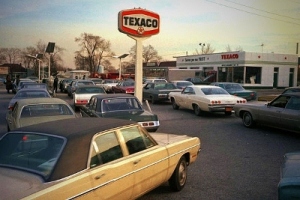 The latter epiphany came to us rather abruptly with the energy crisis of 1973, when people had to line up for hours to fill their cars and oftentimes there was no gas left to be sold. We suddenly became acutely aware of our limits as a society in a world without fuel. Our shared cynicism of politics in general can probably be traced backed to August 8th 1974, when Richard Milhous Nixon announced his resignation over national television and we knew definitively that America – a nation that prides itself on political freedom – had
The latter epiphany came to us rather abruptly with the energy crisis of 1973, when people had to line up for hours to fill their cars and oftentimes there was no gas left to be sold. We suddenly became acutely aware of our limits as a society in a world without fuel. Our shared cynicism of politics in general can probably be traced backed to August 8th 1974, when Richard Milhous Nixon announced his resignation over national television and we knew definitively that America – a nation that prides itself on political freedom – had a corrupt president. That same television brought the war in faraway Vietnam right into our living rooms and somehow the wanton killing, bombs and napalm-scorched bodies became that much more real. It wasn’t glorious war for the sake of freedom any more, it was just senseless death. As the decade closed I was a long-haired, jean jacket wearing, left-wing, Harrowsmith-reading estate gardener who listened to Neil Young rage about racism and dreamed of a better world. Somehow those dreams never came true and even though we wanted to end war, all wars…even though we wanted to save our planet and clean up the mess we had already made…even though we
a corrupt president. That same television brought the war in faraway Vietnam right into our living rooms and somehow the wanton killing, bombs and napalm-scorched bodies became that much more real. It wasn’t glorious war for the sake of freedom any more, it was just senseless death. As the decade closed I was a long-haired, jean jacket wearing, left-wing, Harrowsmith-reading estate gardener who listened to Neil Young rage about racism and dreamed of a better world. Somehow those dreams never came true and even though we wanted to end war, all wars…even though we wanted to save our planet and clean up the mess we had already made…even though we 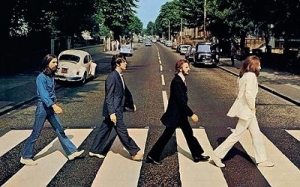 wanted a more egalitarian society…we seemed to have failed on all fronts. Like many people I inadvertently left my ideals behind as the everyday demands of life began to pile up. And yet much of Africa and the Middle East is still embroiled in conflict, racism seems to be on the rise as some people look for a scapegoat for the troubled economic times, companies are spending (and making) hundreds of millions of dollars squeezing the last drop of oil out of the earth and the comfortable middle class is literally evaporating before our eyes. Call me jaded, but 2012 is looking more like the 1970’s every day – so maybe, we are due for another decade of looking out. I just hope we can cross that road from a position of moral outrage, to the other side, where the real change begins.
wanted a more egalitarian society…we seemed to have failed on all fronts. Like many people I inadvertently left my ideals behind as the everyday demands of life began to pile up. And yet much of Africa and the Middle East is still embroiled in conflict, racism seems to be on the rise as some people look for a scapegoat for the troubled economic times, companies are spending (and making) hundreds of millions of dollars squeezing the last drop of oil out of the earth and the comfortable middle class is literally evaporating before our eyes. Call me jaded, but 2012 is looking more like the 1970’s every day – so maybe, we are due for another decade of looking out. I just hope we can cross that road from a position of moral outrage, to the other side, where the real change begins.
Posted in Life
Tagged Neil Young, Richard Nixon, The 1970's, The Beatles, The Energy Crisis
Leave a comment
Plants like People
“If you think in terms of a year, plant a seed; if in terms of ten years, plant trees; if in terms of 100 years, teach the people.” Confucius (551-479 AD)
You are looking at one of my favourite family photographs here on the left – it was taken at Expo ’67 in Montreal and it commemorates the one and only time that my two grandfathers had the opportunity to meet each other. On the left is my Mom’s dad, an Austrian named Franz and on the right is my Dad’s dad, Norbert, a true born-in-Quebec French Canadian.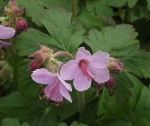 Today, while I was pruning a Bigroot Cranesbill (Geranium macrorrhizum) my Austrian grandfather came to mind…it took only one or two bruised leaves for that distinct fragrance to hit my nostrils and with it, he immediately came into focus. Being an Austrian, I knew his favourite plant was Edelweiss,
Today, while I was pruning a Bigroot Cranesbill (Geranium macrorrhizum) my Austrian grandfather came to mind…it took only one or two bruised leaves for that distinct fragrance to hit my nostrils and with it, he immediately came into focus. Being an Austrian, I knew his favourite plant was Edelweiss, 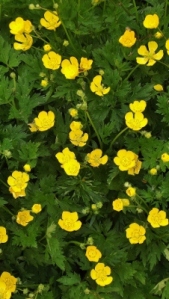 but my memories of him always involve that pungent aroma of the Old Spice aftershave that he wore religiously, day after day and year after year. My other grandfather also has his own plant of sorts, which is actually just a common weed – but every time I see Buttercup in bloom my mind takes me back to an ordinary afternoon in Belleville Ontario some forty years ago. I rarely saw my Dad’s father, mostly because we lived in the west for much of my childhood and my grandfather wasn’t one to travel. But on one of those rare visits to our home I have a memory of us kidding around in the backyard. He went and picked a small bouquet of Buttercup flowers and brought them over to me. He said “let’s see if you like butter”, and then he gently lifted my chin and started brushing it with his handful of weeds. He explained to me that if my chin turned yellow that meant that I liked butter and after carefully examining it, he grinned and proclaimed …”see, I was right, I always figured you for a butter lover” and then he tussled my hair and went to play with my brothers. It’s funny sometimes the small things we
but my memories of him always involve that pungent aroma of the Old Spice aftershave that he wore religiously, day after day and year after year. My other grandfather also has his own plant of sorts, which is actually just a common weed – but every time I see Buttercup in bloom my mind takes me back to an ordinary afternoon in Belleville Ontario some forty years ago. I rarely saw my Dad’s father, mostly because we lived in the west for much of my childhood and my grandfather wasn’t one to travel. But on one of those rare visits to our home I have a memory of us kidding around in the backyard. He went and picked a small bouquet of Buttercup flowers and brought them over to me. He said “let’s see if you like butter”, and then he gently lifted my chin and started brushing it with his handful of weeds. He explained to me that if my chin turned yellow that meant that I liked butter and after carefully examining it, he grinned and proclaimed …”see, I was right, I always figured you for a butter lover” and then he tussled my hair and went to play with my brothers. It’s funny sometimes the small things we 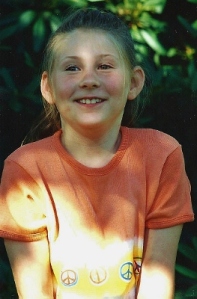 encounter that bring the past back to life, and for me it’s almost always plants. Another one of these is a rare Chinese shrub called Decaisnea fargesii. It has a very unusual common name, Dead Man’s Fingers…a reference to the bizarre bright blue sausage-like edible fruits that resemble a deceased digit. When my youngest daughter Madeleine heard about these gory edibles, she begged me to bring them home for her to try. She was about ten-
encounter that bring the past back to life, and for me it’s almost always plants. Another one of these is a rare Chinese shrub called Decaisnea fargesii. It has a very unusual common name, Dead Man’s Fingers…a reference to the bizarre bright blue sausage-like edible fruits that resemble a deceased digit. When my youngest daughter Madeleine heard about these gory edibles, she begged me to bring them home for her to try. She was about ten- years old at the time, what I like to call the macabre stage. Being an obliging father I brought a cluster home and we cracked it open to eat. The edible jelly inside the pod is whitish and very snot-like, so it takes a strong constitution to even try it (it tastes like Lychee Nut). Maddy was up for it, but neither of her two sisters would touch it with a ten foot pole. Of course, this gave her bragging rights and she was able to go to school the following Monday and tell her classmates that she had eaten Dead Man’s Fingers…and there aren’t many ten-year old’s that can make that claim with a straight face.
years old at the time, what I like to call the macabre stage. Being an obliging father I brought a cluster home and we cracked it open to eat. The edible jelly inside the pod is whitish and very snot-like, so it takes a strong constitution to even try it (it tastes like Lychee Nut). Maddy was up for it, but neither of her two sisters would touch it with a ten foot pole. Of course, this gave her bragging rights and she was able to go to school the following Monday and tell her classmates that she had eaten Dead Man’s Fingers…and there aren’t many ten-year old’s that can make that claim with a straight face.
The Orange that Reminds Me
WHEN THE GRIEVING IS PAST
“A man knows he is growing old because he begins to look like his father.” Gabriel Garcia Marquez (1928-)
It’s May again and I know this because the deep orange deciduous azaleas are  blooming throughout the neighborhood. These flowers hold a particular significance for me, because exactly twenty years ago to the day I was a middle-aged landscaper kneeling below one such azalea in full glory, doing a little hand
blooming throughout the neighborhood. These flowers hold a particular significance for me, because exactly twenty years ago to the day I was a middle-aged landscaper kneeling below one such azalea in full glory, doing a little hand 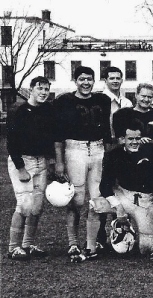 weeding. My boss had driven out to the site with some unexpected bad news…my wife had phoned the office…my father had passed away quite suddenly…I kept working for a few hours and then it finally sunk
weeding. My boss had driven out to the site with some unexpected bad news…my wife had phoned the office…my father had passed away quite suddenly…I kept working for a few hours and then it finally sunk in, he was gone…I went home to grieve. As per his wishes, he was cremated and buried at sea – leaving me no grave side to pay my respects and visit. At first I resented this disconnect, but now that I scuba dive it seems that every time I’m in the Pacific he’s right there with me, in one form or another. As for the rest of him – the young football player,
in, he was gone…I went home to grieve. As per his wishes, he was cremated and buried at sea – leaving me no grave side to pay my respects and visit. At first I resented this disconnect, but now that I scuba dive it seems that every time I’m in the Pacific he’s right there with me, in one form or another. As for the rest of him – the young football player, 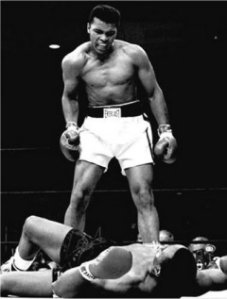 the mustard and sugar sandwiches, the father who loved to watch boxing with his oldest son, the barbeque in the kitchen on those rainy summer days, the guy who woke up well past midnight and said “I was watching that” every time I switched off the station identification signal on the otherwise dormant television set – they are alive and well in my thoughts
the mustard and sugar sandwiches, the father who loved to watch boxing with his oldest son, the barbeque in the kitchen on those rainy summer days, the guy who woke up well past midnight and said “I was watching that” every time I switched off the station identification signal on the otherwise dormant television set – they are alive and well in my thoughts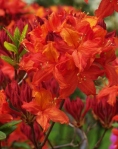 and in the reflection of the face I see in the mirror each morning, the one that looks more like his dad every day. And now that the grieving has past, those orange azaleas are just a pleasant reminder of the man I once knew.
and in the reflection of the face I see in the mirror each morning, the one that looks more like his dad every day. And now that the grieving has past, those orange azaleas are just a pleasant reminder of the man I once knew.
Posted in Uncategorized
2 Comments
Gauguin the Gardener
“The landscape, with its pure, intense colors, dazzled and blinded me…” Paul Gauguin (1848-1903) “In nature colour is used…as a mechanism to attract. The Blue Trees attempts to waken a similar response from viewers. It is within this context that the blue denotes sacredness, something reverential.” Konstantin Dimopoulos (Artist, 1954-Present)
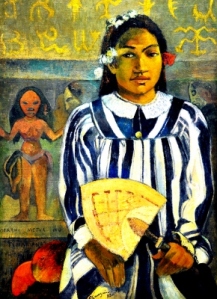 I recently took in an art exhibit, Gauguin & Polynesia: An Elusive Paradise, with my two oldest daughters. I had always been drawn to the style and vibrant colours of his latter works, and since Seattle was this show’s only stop in the United States, we thought it was worth the trip down…and we weren’t disappointed. The exhibit was a series of galleries showing Gauguin’s progression from an his art collector / friend of impressionists / young artist years right through to his death in 1903 on
I recently took in an art exhibit, Gauguin & Polynesia: An Elusive Paradise, with my two oldest daughters. I had always been drawn to the style and vibrant colours of his latter works, and since Seattle was this show’s only stop in the United States, we thought it was worth the trip down…and we weren’t disappointed. The exhibit was a series of galleries showing Gauguin’s progression from an his art collector / friend of impressionists / young artist years right through to his death in 1903 on 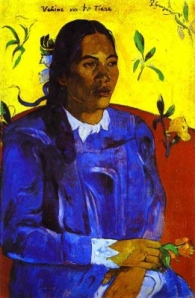 the Marquesas Islands. His early works definitely shows the influence of the emerging impressionists and although he was personal friends with the likes of Pissarro, Paul Cezanne and van Gogh (who he lived with briefly in 1888), he never really felt like he was a part of this new direction in art. Then at the 1889 World’s Fair in Paris (the same one that erected the Eiffel Tower) he becomes fascinated with eastern culture after visiting the elaborate mock Javanese village and Cambodian pavilion. This obsession would eventually lead to the breakdown of his marriage and the first of two trips to Tahiti, which was then at the furthest reaches of colonial France. It was here that Gauguin immersed himself in the native culture and more importantly, the intense beauty of the natural landscape.
the Marquesas Islands. His early works definitely shows the influence of the emerging impressionists and although he was personal friends with the likes of Pissarro, Paul Cezanne and van Gogh (who he lived with briefly in 1888), he never really felt like he was a part of this new direction in art. Then at the 1889 World’s Fair in Paris (the same one that erected the Eiffel Tower) he becomes fascinated with eastern culture after visiting the elaborate mock Javanese village and Cambodian pavilion. This obsession would eventually lead to the breakdown of his marriage and the first of two trips to Tahiti, which was then at the furthest reaches of colonial France. It was here that Gauguin immersed himself in the native culture and more importantly, the intense beauty of the natural landscape.  He would become a gardener of natural colour, harvesting the hues of this strange land and fixing them to canvasses rich in culture and symbolism, so that over a century later, I could visit his Polynesian haunts with my own two eyes. His work here emerged as something more primal, less contrived than many of the impressionists he had admired back in France and yet he still managed to incorporate that unique sense of colour later made famous by such artists as Picasso and Matisse. In essence, Gauguin had found his muse in Tahiti. The exhibit also included many Polynesian artifacts of the period, carvings and ornaments that would have affected his outlook at the time – so one really felt that you had immersed yourself in his world, at least
He would become a gardener of natural colour, harvesting the hues of this strange land and fixing them to canvasses rich in culture and symbolism, so that over a century later, I could visit his Polynesian haunts with my own two eyes. His work here emerged as something more primal, less contrived than many of the impressionists he had admired back in France and yet he still managed to incorporate that unique sense of colour later made famous by such artists as Picasso and Matisse. In essence, Gauguin had found his muse in Tahiti. The exhibit also included many Polynesian artifacts of the period, carvings and ornaments that would have affected his outlook at the time – so one really felt that you had immersed yourself in his world, at least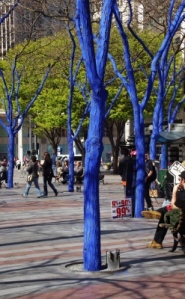 while you were in the galleries. On our way back to the parking lot from the exhibit, we stumbled upon an interesting art installation in downtown Westlake Park. The Blue Trees by Konstantin Dimopoulos looks exactly as it sounds…with the trunks and scaffold branches of the Honey Locusts (Gleditsia triacanthos) painted in a startling biodegradable cobalt colour. Call it coincidental, but I was really struck by the fact that it reminded me of Gauguin’s work, particularly the predominance of blue in many of his canvasses. I had to wonder how many future artists were being inspired by these blue trees, and if some day, say a hundred years from now, people would be viewing their collected works in the gallery I had just come from.
while you were in the galleries. On our way back to the parking lot from the exhibit, we stumbled upon an interesting art installation in downtown Westlake Park. The Blue Trees by Konstantin Dimopoulos looks exactly as it sounds…with the trunks and scaffold branches of the Honey Locusts (Gleditsia triacanthos) painted in a startling biodegradable cobalt colour. Call it coincidental, but I was really struck by the fact that it reminded me of Gauguin’s work, particularly the predominance of blue in many of his canvasses. I had to wonder how many future artists were being inspired by these blue trees, and if some day, say a hundred years from now, people would be viewing their collected works in the gallery I had just come from.
Our Garden of Sorrows
“Life is short, break the rules, forgive quickly, kiss slowly, love truly, laugh uncontrollably, and never regret anything that made you smile.” Mark Twain (1835-1910) “Thank you, Crystal, for making everyone around you that much more happier. You shined, and that did not go unnoticed.” Online Tribute “Life is too short and this proves it, he hadn’t even lived his life yet.” Accident Witness
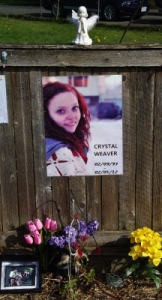 It was 2:25 on the morning of February 5th 2012 when two vehicles were driving in opposite directions going down one of the main streets that passes through my town. One vehicle was a green van with three teenaged boys, the other a Honda Civic with three young women. For reasons not important to this story they crashed head-on and the accident took the lives of 16 year-old Dawson Spencer and 18 year-old Crystal Weaver. I know this because
It was 2:25 on the morning of February 5th 2012 when two vehicles were driving in opposite directions going down one of the main streets that passes through my town. One vehicle was a green van with three teenaged boys, the other a Honda Civic with three young women. For reasons not important to this story they crashed head-on and the accident took the lives of 16 year-old Dawson Spencer and 18 year-old Crystal Weaver. I know this because a make-shift garden now stands in the place where they both died. It sits in front of an old, time-worn fence that hasn’t been painted for years. Perhaps that is why the brightly coloured flowers, most of which are artificial, seem so out of place…like they don’t really belong here. It is an unlikely place for two young people to have lost their lives, but I suppose that none of us gets to choose the spot where we take our last breath. I had read the story of this tragic
a make-shift garden now stands in the place where they both died. It sits in front of an old, time-worn fence that hasn’t been painted for years. Perhaps that is why the brightly coloured flowers, most of which are artificial, seem so out of place…like they don’t really belong here. It is an unlikely place for two young people to have lost their lives, but I suppose that none of us gets to choose the spot where we take our last breath. I had read the story of this tragic 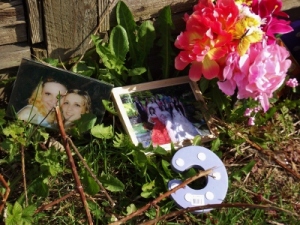 loss in the local newspaper and had driven by the memorial many times on the way to work, but I didn’t actually stop to look until I found it completely abandoned one day. In past I had seen dozens of people gathered around that fence, but it is April now and those days are gone – all that remains are the memories and the ephemera of better days strewn upon the ground.
loss in the local newspaper and had driven by the memorial many times on the way to work, but I didn’t actually stop to look until I found it completely abandoned one day. In past I had seen dozens of people gathered around that fence, but it is April now and those days are gone – all that remains are the memories and the ephemera of better days strewn upon the ground. 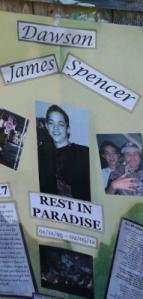 One can find personal photos, a plaster angel, poems, a hand-carved bench, toys and even a plastic tiara…each item has a personal significance, each serves to console those left behind, ordinary people left to deal with the palpable grief of a sudden loss.
One can find personal photos, a plaster angel, poems, a hand-carved bench, toys and even a plastic tiara…each item has a personal significance, each serves to console those left behind, ordinary people left to deal with the palpable grief of a sudden loss. 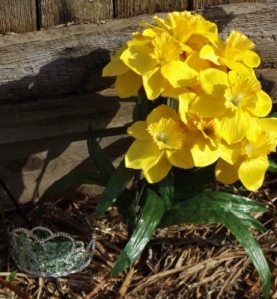 This is a garden borne of sorrow and as such, it will one day no longer be needed. When that time comes, friends and family will instead cling to those happier memories and the bitterness of reality can be left here, in this roadside memorial. The unkept grass, dandelions and blackberries already springing to life will soon cover
This is a garden borne of sorrow and as such, it will one day no longer be needed. When that time comes, friends and family will instead cling to those happier memories and the bitterness of reality can be left here, in this roadside memorial. The unkept grass, dandelions and blackberries already springing to life will soon cover most of it. Over time, fewer and fewer people will visit and one day a sheepish city worker will no doubt load
most of it. Over time, fewer and fewer people will visit and one day a sheepish city worker will no doubt load 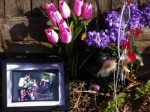 all of it into the back of a truck and take it away. But that won’t mean that these two young people are forgotten, it will just be the time when this garden of sorrows has simply
all of it into the back of a truck and take it away. But that won’t mean that these two young people are forgotten, it will just be the time when this garden of sorrows has simply  served its purpose and that those of us left behind have healed enough to go on living without Dawson and Crystal. That said, I’ve decided to post their garden here on the internet, where it can live just a little bit longer.
served its purpose and that those of us left behind have healed enough to go on living without Dawson and Crystal. That said, I’ve decided to post their garden here on the internet, where it can live just a little bit longer.
Posted in Life, Uncategorized
Leave a comment

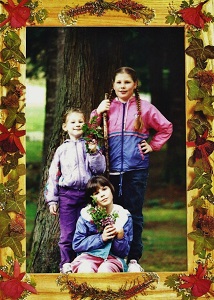 As one gets older (and I am 56 years in this world) you start to wonder what your purpose is on this planet. The usual reaction is to reflect back on your accomplishments and come to the realization that most of these are rather ephemeral – meaning that while they probably provided you with some momentary pleasure, in the long term they will have very little or no impact on the world that you will inevitably leave behind. This is particularly true if you have children and I consider raising three daughters with my wife, Pauline, to be one of our greatest achievements. Truth be told, they did more to make me a better person than I did to fashion them into the caring adults they are today – but of course we never realize that through those busy parenting years. Having people you really care about, such as children, lays bare all the frivolous wants of modern society, showing them to be what they really are, unnecessary. In this world there are really only five essentials for us to exist…air to breathe, clean water to drink, food, shelter from the elements and some sort of love or companionship (in whatever form that may take). During my career as a gardener I have written two books and hundreds of articles, taught innumerable courses and seminars, designed and installed more gardens than I care to remember and yet all of that work seems insignificant when compared to my latest endeavor. I decided
As one gets older (and I am 56 years in this world) you start to wonder what your purpose is on this planet. The usual reaction is to reflect back on your accomplishments and come to the realization that most of these are rather ephemeral – meaning that while they probably provided you with some momentary pleasure, in the long term they will have very little or no impact on the world that you will inevitably leave behind. This is particularly true if you have children and I consider raising three daughters with my wife, Pauline, to be one of our greatest achievements. Truth be told, they did more to make me a better person than I did to fashion them into the caring adults they are today – but of course we never realize that through those busy parenting years. Having people you really care about, such as children, lays bare all the frivolous wants of modern society, showing them to be what they really are, unnecessary. In this world there are really only five essentials for us to exist…air to breathe, clean water to drink, food, shelter from the elements and some sort of love or companionship (in whatever form that may take). During my career as a gardener I have written two books and hundreds of articles, taught innumerable courses and seminars, designed and installed more gardens than I care to remember and yet all of that work seems insignificant when compared to my latest endeavor. I decided 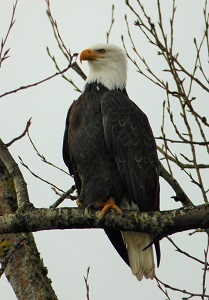 three years ago to write a book that mattered, a tome about food and our potential to grow it regardless of our means. What inspired me were the young families coming to the garden centre where I work looking for edibles to grow in pots on balconies and decks – or the only spaces they have to farm in their tiny condominiums and townhouses. Of course, it was never about subsistence given the minuscule growing areas, but simply a means of connecting with the very basic precept that all food comes from living things. It might be a dwarf fruit tree, a tomato, a containerized herb garden – it really doesn’t matter – because what is gained is a profound respect for the planet that provides us with this biosphere of life potential. Even my oldest two daughters, Nicole and Rochelle, who share a community garden plot behind their townhouse, have discovered the basic joy of making soup from Sorrel grown in their own tiny space or spicy homemade pesto from scapes they cut from a single row of garlic. And while their food is delicious, the more important gains that I see is the profound and growing respect they have for the world around them – a planet that I had hoped would not be left on the tipping point of environmental collapse simply for the pollution caused by the trappings of a ‘modern’ society. Case in point, my daughter Rochelle and I were out for a hike on the north side of the Fraser river today. In a matter of two hours we saw dozens of bald eagles and red-tailed hawks, most of which were enjoying the spoils of the tail end of the Chum and Chinook salmon run. And yet just across the river, a mining operation had blasted half a mountainside away (all the way down to the river’s edge) just to produce the gravel used to support the out-of-control housing development that the Fraser Valley is experiencing right now much of it driven by speculators, not local people buying much-needed houses. This in turn means young families have few affordable housing options, be it renting or attempting to purchase an outrageously priced
three years ago to write a book that mattered, a tome about food and our potential to grow it regardless of our means. What inspired me were the young families coming to the garden centre where I work looking for edibles to grow in pots on balconies and decks – or the only spaces they have to farm in their tiny condominiums and townhouses. Of course, it was never about subsistence given the minuscule growing areas, but simply a means of connecting with the very basic precept that all food comes from living things. It might be a dwarf fruit tree, a tomato, a containerized herb garden – it really doesn’t matter – because what is gained is a profound respect for the planet that provides us with this biosphere of life potential. Even my oldest two daughters, Nicole and Rochelle, who share a community garden plot behind their townhouse, have discovered the basic joy of making soup from Sorrel grown in their own tiny space or spicy homemade pesto from scapes they cut from a single row of garlic. And while their food is delicious, the more important gains that I see is the profound and growing respect they have for the world around them – a planet that I had hoped would not be left on the tipping point of environmental collapse simply for the pollution caused by the trappings of a ‘modern’ society. Case in point, my daughter Rochelle and I were out for a hike on the north side of the Fraser river today. In a matter of two hours we saw dozens of bald eagles and red-tailed hawks, most of which were enjoying the spoils of the tail end of the Chum and Chinook salmon run. And yet just across the river, a mining operation had blasted half a mountainside away (all the way down to the river’s edge) just to produce the gravel used to support the out-of-control housing development that the Fraser Valley is experiencing right now much of it driven by speculators, not local people buying much-needed houses. This in turn means young families have few affordable housing options, be it renting or attempting to purchase an outrageously priced 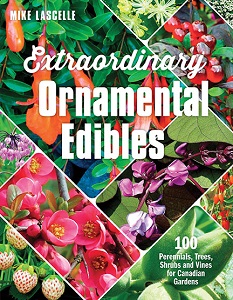 townhouse or condominium. Of course, the more obvious impact is that missing half a mountain, which is never coming back – nor are the trees, shrubs and understory plants that used to filter the rainwater before it entered the Fraser River, let alone the obliterated animal habitat. So much waste for so little gain in terms of serving all humanity and the other species that we share this planet with. So I will start with a seed, a little book to empower the next generation of gardeners with a respect of edible plants and their potential to grow them in harmony with nature. Consider Extraordinary Ornamental Edibles – 100 Perennials, Trees, Shrubs and Vines for Canadian Gardens to be my first push against the madness that we call first world living…with more to come.
townhouse or condominium. Of course, the more obvious impact is that missing half a mountain, which is never coming back – nor are the trees, shrubs and understory plants that used to filter the rainwater before it entered the Fraser River, let alone the obliterated animal habitat. So much waste for so little gain in terms of serving all humanity and the other species that we share this planet with. So I will start with a seed, a little book to empower the next generation of gardeners with a respect of edible plants and their potential to grow them in harmony with nature. Consider Extraordinary Ornamental Edibles – 100 Perennials, Trees, Shrubs and Vines for Canadian Gardens to be my first push against the madness that we call first world living…with more to come.